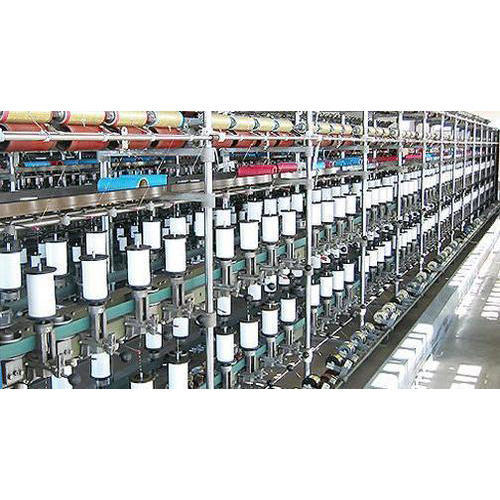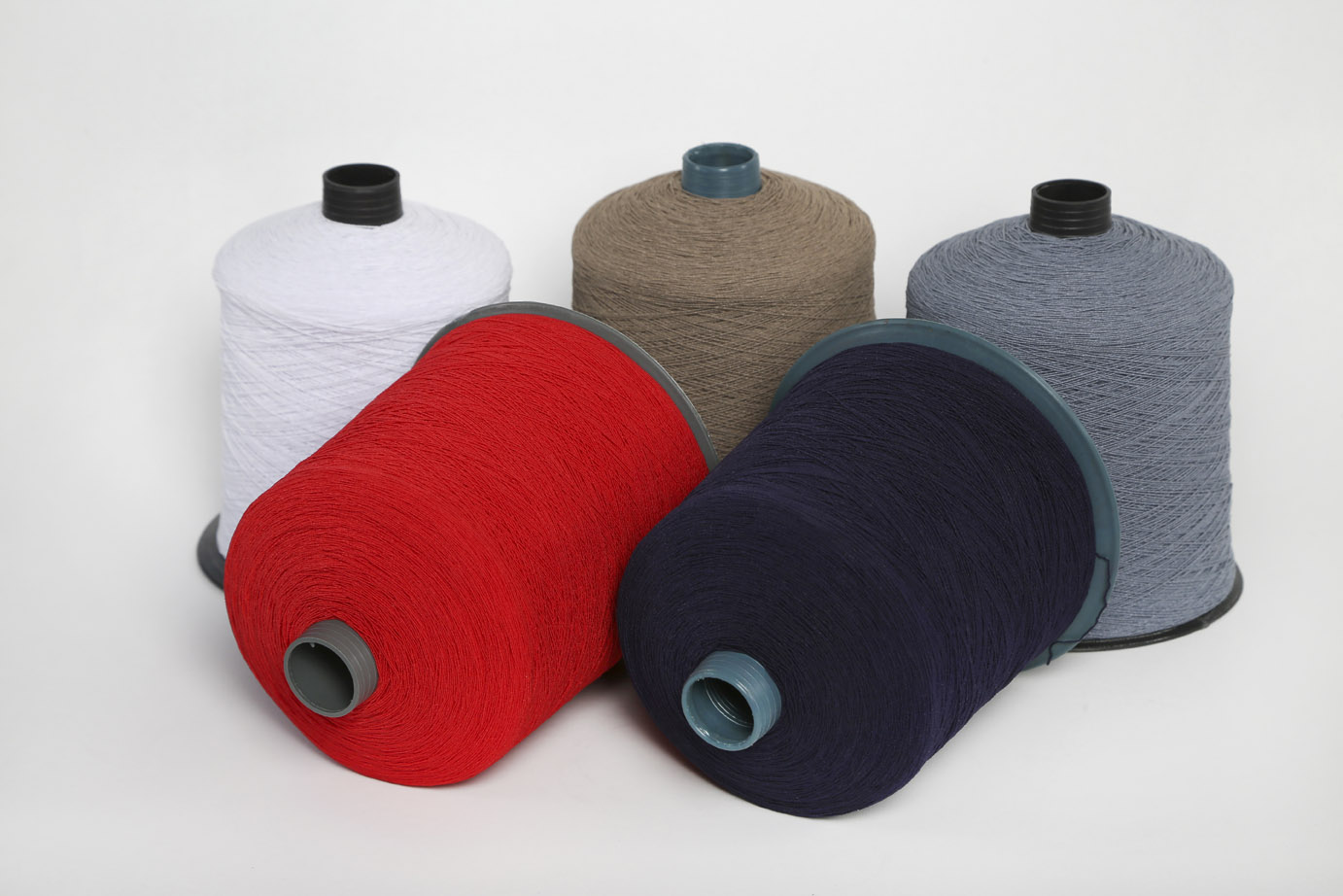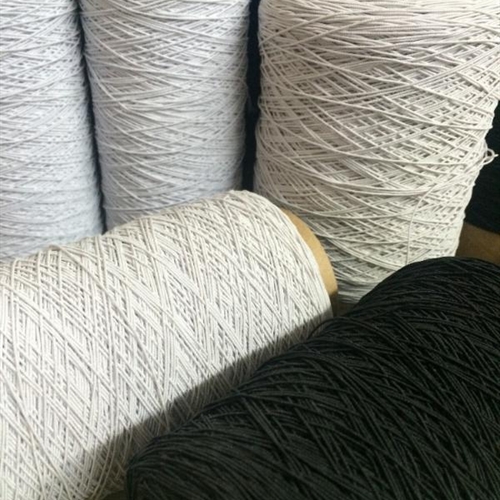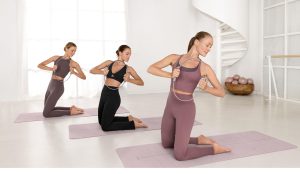Rubber covered yarn is a versatile textile component that combines the elasticity of rubber with the strength and durability of various fibers. This innovative material has revolutionized the textile industry, offering enhanced flexibility, comfort, and performance across a wide range of applications. In this comprehensive guide, we’ll explore the world of rubber covered yarn, from its manufacturing process to its diverse uses and variations.
Rubber Covered Yarn

Rubber covered yarn, also known as rubber coated yarn, is a specialized textile product that consists of a rubber core wrapped with fibers such as polyester, nylon, or cotton. This unique combination results in a yarn that possesses both elasticity and strength, making it ideal for various applications in the textile industry.
Manufacturing Process
The production of rubber covered yarn involves a complex process that requires precision and expertise. Here’s an overview of the key steps:
- Core preparation: The rubber core is extruded and stretched to achieve the desired elasticity.
- Fiber selection: High-quality fibers are chosen based on the intended application and desired properties.
- Covering process: The rubber core is wrapped with the selected fibers using specialized machinery, ensuring an even distribution and secure bond between the core and the fibers.
Types of Rubber Used
The type of rubber used in rubber covered yarn can significantly influence its properties. The most common types include natural rubber, synthetic rubber, and thermoplastic elastomers (TPE). Each type has distinct characteristics that make them suitable for different applications:
- Natural Rubber: Known for its excellent elasticity, resilience, and tensile strength, natural rubber is often used in applications requiring high flexibility.
- Synthetic Rubber: This includes materials like neoprene or nitrile rubber. They offer superior resistance to heat, chemicals, and abrasion, making synthetic options ideal for specialized applications.
- Thermoplastic Elastomers (TPE): These are versatile materials that combine the processing advantages of plastics with the functional benefits of rubber. TPEs can be molded and reshaped, expanding the creative possibilities for designers.
Applications of Rubber Covered Yarn
Rubber covered yarn is widely utilized in various industries due to its unique properties. Some of the most notable applications include:
- Textiles and Apparel: In the fashion and fitness sectors, rubber covered yarn is commonly used in elastic waistbands, swimwear, and activewear, providing comfort and stretch.
- Industrial Textiles: Due to its durability, this type of yarn is often employed in manufacturing products such as belts, cables, and safety harnesses.
- Medical Supplies: Rubber covered yarn can be found in medical textiles, providing necessary elasticity for compression garments and bandages.
Advantages of Rubber Covered Yarn
The use of rubber covered yarn offers several advantages, including:
- Increased Durability: The combination of rubber and fiber enhances the product’s lifespan, making it suitable for both everyday use and demanding environments.
- Enhanced Comfort: With the right balance of elasticity and softness, rubber covered yarn provides a comfortable fit without sacrificing support.
- Versatile Usage: From clothing to industrial applications, this versatile material can adapt to various needs, allowing for innovative solutions across different sectors.
Rubber Yarn Covering Manufacturer

Understanding the role of rubber yarn covering manufacturers is essential for anyone looking to source or utilize rubber covered yarn. These manufacturers specialize in creating high-quality rubber coated yarns designed to meet specific industry standards and customer requirements.
Key Manufacturing Standards
Manufacturers must adhere to strict guidelines and standards to ensure the quality and reliability of their products. Common standards include:
- ISO Certification: Many reputable manufacturers achieve ISO certification, demonstrating their commitment to quality management systems. This certification assures customers that the manufacturer consistently produces reliable products.
- Material Safety Data Sheets (MSDS): Manufacturers provide MSDS for their products, detailing the properties, handling instructions, and potential hazards associated with the materials used in their yarns.
Selecting a Reliable Manufacturer
When choosing a rubber yarn covering manufacturer, consider the following factors to ensure you partner with a reliable source:
- Reputation: Research the manufacturer’s history, client testimonials, and case studies to gauge their reputation in the industry.
- Capabilities: Confirm that the manufacturer has the capacity and technology to produce the specific type of rubber covered yarn you need.
- Customization Options: Look for manufacturers that offer customization, allowing you to tailor your order based on specific requirements such as color, elasticity, and fiber composition.
Innovations in Rubber Yarn Covering
Innovation in manufacturing processes continues to evolve, leading to the development of new rubber covered yarn varieties. Manufacturers are now exploring advanced techniques such as:
- Eco-friendly Materials: Many manufacturers are working towards producing sustainable rubber covered yarn by using recycled materials or bio-based rubber alternatives.
- Improved Coating Techniques: Advanced coating technologies enhance the adhesion between rubber and fibers, resulting in improved performance and durability of the finished product.
- Smart Fabrics: Some manufacturers are integrating smart technology into their rubber covered yarn, allowing for functionalities like moisture-wicking and temperature regulation.
Rubber Coated Yarn

Rubber coated yarn is another term frequently used interchangeably with rubber covered yarn. However, there are subtle differences worth noting, particularly in terms of application and texture.
Characteristics of Rubber Coated Yarn
Rubber coated yarn typically refers to yarns where the rubber layer is thicker, offering different performance attributes:
- Grip and Traction: The increased rubber content enhances grip, making it ideal for applications requiring better traction, such as sports equipment and footwear.
- Water Resistance: A thicker rubber coating can also provide additional water resistance, making this type of yarn suitable for outdoor gear and protective clothing.
Common Uses of Rubber Coated Yarn
Due to its distinctive properties, rubber coated yarn finds applications in various areas such as:
- Sports Equipment: Commonly used in products like basketballs, tennis rackets, and gym mats, rubber coated yarn ensures optimal performance and durability.
- Automotive Industry: This yarn is used in automotive upholstery, providing elasticity and strength while enhancing the aesthetic appeal of vehicle interiors.
- Outdoor Gear: Rubber coated yarn is integral to tents, tarps, and other outdoor products, providing resistance against harsh weather conditions.
Comparisons with Rubber Covered Yarn
While rubber coated and rubber covered yarn may seem similar, there are noteworthy distinctions:
- Elasticity: Rubber covered yarn usually maintains a higher degree of elasticity, while rubber coated yarn prioritizes grip and durability.
- Texture: The textural feel of rubber coated yarn tends to be smoother, whereas rubber covered yarn may exhibit a more textured finish depending on the fiber used.
Covered Elastic Yarn
Covered elastic yarn is a specialized type of rubber covered yarn designed specifically for applications requiring elastic properties. It features a central elastic core wrapped in fibers for added strength and flexibility.
Benefits of Covered Elastic Yarn
Covered elastic yarn offers numerous benefits that make it a popular choice in textile production:
- Superior Stretch: The elastic core provides excellent stretch and recovery, making it ideal for fitted garments and stretchy fabrics.
- Comfortable Fit: When incorporated into products like leggings or activewear, this yarn helps maintain a comfortable fit without constriction.
Applications of Covered Elastic Yarn
You can find covered elastic yarn in various garments and household products, including:
- Activewear: This yarn is essential for workout clothes, enabling a full range of motion without compromising support.
- Lingerie: Its soft touch and stretchability make covered elastic yarn perfect for delicate lingerie items.
- Home Textile: Items like fitted sheets and stretchable table covers often utilize covered elastic yarn for a snug fit.
Comparison with Regular Elastic Yarn
Compared to regular elastic yarn, covered elastic yarn provides enhanced durability and comfort:
- Durability: The outer fiber wrapping protects the elastic core from wear and tear, prolonging the life of the finished product.
- Comfort: The fiber covering reduces skin irritation, making it a preferred choice for close-fitting apparel.
Covered Spandex Yarn
Covered spandex yarn combines the stretchiness of spandex with the durability of other fibers, resulting in a product that offers exceptional flexibility, strength, and comfort. This type of yarn is particularly popular in the fashion and activewear sectors.
Properties of Covered Spandex Yarn
Covered spandex yarn possesses several distinguishing features:
- High Elasticity: Spandex is known for its extreme stretchability, allowing garments to move freely while maintaining their shape.
- Soft Texture: The outer fibers provide a soft touch, enhancing comfort when worn directly against the skin.
Applications of Covered Spandex Yarn
This versatile yarn is often found in a wide range of clothing and accessories:
- Athletic Wear: Ideal for yoga pants, running shorts, and swimsuits, covered spandex yarn allows for unrestricted movement during physical activities.
- Fashion Garments: Designers often incorporate covered spandex yarn into dresses, blouses, and form-fitting tops to create stylish yet comfortable clothing.
- Costumes and Theatrical Wear: The stretchability and vibrant colors available through covered spandex yarn make it a favorite among costume designers.
Advantages Over Other Yarns
Compared to traditional yarns, covered spandex yarn offers unique advantages:
- Shape Retention: Unlike many other yarns, covered spandex retains its shape even after repeated stretches, making it ideal for fitted garments.
- Reduced Wrinkles: Spandex contributes to reduced wrinkling, keeping garments looking fresh and new longer.
Air Covered Spandex Yarn
Air covered spandex yarn is an innovative variation that features an air-filled layer around the spandex core. This construction results in lightweight yet durable yarn, making it suitable for specific applications that require breathability and comfort.
Features of Air Covered Spandex Yarn
Air covered spandex yarn stands out due to several key features:
- Lightweight: The air-filled layer makes this yarn incredibly light, which is beneficial for activewear and summer garments.
- Enhanced Breathability: The construction allows for improved airflow, keeping the wearer cool and comfortable during activity.
Common Uses of Air Covered Spandex Yarn
Thanks to its unique properties, air covered spandex yarn finds its way into diverse products:
- Summer Apparel: Lightweight and breathable, this yarn is perfect for summer dresses, tops, and activewear.
- Performance Sportswear: Athletes benefit from the moisture-wicking and temperature-regulating properties of air covered spandex yarn.
Comparisons with Standard Spandex Yarn
When comparing air covered spandex yarn to standard spandex yarn, several differences emerge:
- Weight: Air covered spandex yarn is lighter, which can enhance the overall comfort of garments.
- Breathability: The air layer increases ventilation, making it a better option for hot-weather clothing compared to standard spandex.
Spandex Yarn Price
The price of spandex yarn can vary based on several factors, including quality, manufacturing methods, and type of yarn. Understanding these variables is crucial for anyone looking to purchase spandex yarn for manufacturing or crafting purposes.
Factors Influencing Price
Several elements contribute to the pricing of spandex yarn:
- Quality of Raw Materials: Higher quality fibers and rubbers will naturally lead to increased costs in yarn production.
- Production Scale: Large-scale manufacturers may offer competitive pricing due to economies of scale, while smaller producers may charge more for bespoke options.
- Customization: Customized orders—for instance, specific colors or blends—will generally incur higher prices compared to standard offerings.
Comparing Prices Across Types
Prices may also differ significantly depending on the type of spandex yarn being purchased:
- Standard Spandex Yarn: Typically more affordable, standard spandex yarns are best suited for general applications.
- Covered Spandex Yarn: While they tend to cost more due to the added fibers, the durability and comfort justify the investment for many brands.
Tips for Buying Spandex Yarn
To get the best value for your money, consider the following tips:
- Shop Around: Comparing prices from various suppliers can help identify competitive rates.
- Request Samples: Before making bulk purchases, request samples to assess quality and suitability for your intended use.
- Consider Long-term Value: Investing slightly more in higher-quality yarn may save costs in the long run by reducing the need for replacements.
Polyester Covered Spandex Yarn
Polyester covered spandex yarn combines the stretchiness of spandex with the durability of polyester fibers, producing a product that is both flexible and robust. This blend has become increasingly popular in various textile applications.
Properties of Polyester Covered Spandex Yarn
Key characteristics of polyester covered spandex yarn include:
- Durability: Polyester adds strength and resistance to wear and tear, extending the lifespan of garments made with this yarn.
- Color Retention: The dyeability of polyester means colors remain vibrant wash after wash, making it ideal for fashion applications.
Applications of Polyester Covered Spandex Yarn
This yarn’s unique combination of properties leads to its widespread use, including:
- Activewear: The durability and elasticity make it a popular choice for sports bras, leggings, and other performance apparel.
- Fashion Clothing: Designers utilize polyester covered spandex yarn for everything from fitted dresses to trendy tops, thanks to its ability to hold shape while remaining comfortable.
Advantages over Other Combinations
When compared to other yarn combinations, polyester covered spandex yarn offers several advantages:
- Weather Resistance: Polyester inherently resists moisture and mildew, making it suitable for outdoor apparel and gear.
- Cost Efficiency: Generally, polyester covered spandex yarn is more affordable than some premium blends, delivering excellent value for manufacturers.
Conclusion
In conclusion, rubber covered yarn, along with its various adaptations such as rubber coated yarn, covered elastic yarn, and spandex blends, plays a critical role in modern textile applications. The advancements in manufacturing and innovation provide endless opportunities for designers and manufacturers alike. Whether you’re involved in fashion, athletics, or industrial applications, understanding the nuances of these materials can help you make informed choices and elevate your projects. Embracing these versatile yarns not only enhances product functionality but also contributes to the overall aesthetics and durability of the final piece.



